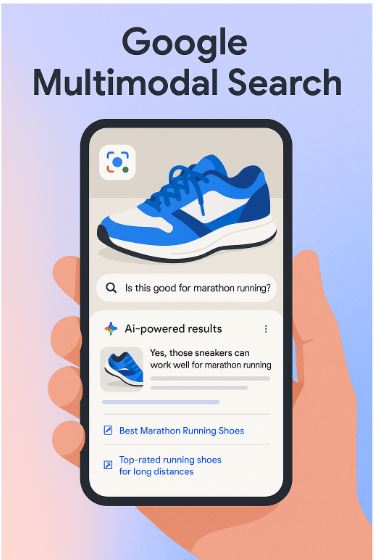
Google Multimodal Search: Revolutionizing the Way We Search Online
In today’s fast-paced digital world, how we search for information is evolving rapidly. One of the most exciting developments in this space is Google multimodal search—a powerful blend of visual and text-based queries powered by artificial intelligence. This revolutionary feature is redefining how users interact with Google Search and access information more intuitively and accurately.
What is Google Multimodal Search?
Google multimodal search is a new search experience that allows users to input queries using a combination of text and images. This means you can take a picture of an object, add a related question or keyword, and Google’s AI will process both inputs simultaneously to deliver context-rich results. It’s an innovative step forward in natural search interaction, making searches more conversational, flexible, and aligned with how humans naturally explore information.
How Does It Work?
At the heart of Google multimodal search is the integration of Google Lens with the AI-powered Gemini model. When you upload an image and enter a query, Google’s AI doesn’t just recognize the visual elements—it also interprets context, relationships, and your intent behind the question. This creates a layered search experience that goes far beyond traditional text-based results.
For example, if you take a picture of a sneaker and ask, “Is this good for marathon running?” Google multimodal search will analyze the image, identify the product, and provide expert insights, reviews, alternatives, and links—all in one go.
Why Google Multimodal Search Matters
The real game-changer with Google multimodal search is its ability to provide richer, more dynamic answers. Instead of relying solely on keywords, users can now ask real-life questions using real-life visuals. Whether you’re a traveler, a student, a shopper, or just curious, this feature makes getting detailed information quicker and easier.
Key Benefits:
-
More accurate results based on visual and text input.
-
Time-saving—you no longer have to describe what you see.
-
Personalized context—your searches are more relevant to your needs.
-
Improved accessibility for users who find it difficult to describe what they see in words.
Real-World Applications
Let’s break down how Google multimodal search can be used in everyday situations:
1. Shopping Smarter
Take a photo of an outfit and ask where to buy similar clothes. The AI will pull up links to retailers, price comparisons, and product reviews.
2. Travel Assistance
Point your camera at a landmark and ask about its history or nearby attractions. Google multimodal search will instantly generate a brief description and suggest travel guides.
3. Academic Research
Snap a diagram from a textbook and type a question like “Explain this circuit.” The AI will provide a breakdown, explanations, and links to educational resources.
4. Home Improvement
Photograph a tool or a damaged item at home and ask how to fix or replace it. You’ll receive video tutorials, manuals, and local store links.
Google Multimodal Search vs Traditional Search
While traditional search is keyword-heavy and linear, Google multimodal search offers a more holistic approach. It mimics how humans think—visually, contextually, and interactively. Instead of forcing users to fit their queries into exact phrases, it invites them to interact naturally, using their surroundings.
This feature also improves discoverability. For instance, visual searches that combine questions like “What kind of tree is this?” with an image help users get answers they wouldn’t find through text alone.
The Technology Behind It
Google multimodal search leverages advanced AI models like Gemini, which are trained on massive datasets to understand language and visuals in tandem. It uses a process called “query fan-out,” where your question and image spark multiple related queries behind the scenes. The result? Rich, layered, and highly accurate responses.
Google Lens does the image analysis, recognizing colors, objects, textures, and even reading text within the image. Gemini then processes the intent and links it to millions of indexed sources, generating insights in seconds.
Availability and Rollout
Currently, Google multimodal search is being rolled out in stages. Initially exclusive to Google One AI Premium subscribers, it is now gradually being offered to more users via Google Labs in the U.S., with plans for global expansion. As more feedback is collected, we can expect further refinements and a wider release.
How It Impacts SEO and Content Strategy
For marketers, bloggers, and businesses, Google multimodal search changes the SEO game. Content must now be optimized not only for text but also for visual relevance. Including images with alt-text, using schema markup, and structuring content to answer image-based queries will become essential.
Brands that embrace this evolution early will have a distinct advantage. Optimizing for Google multimodal search means thinking about how users see your content, not just how they read it.
Final Thoughts
Google multimodal search is more than just a feature—it’s the future of search. By enabling users to interact through both images and text, Google is making information access more human, more intuitive, and more efficient. As this technology continues to evolve, it will transform how we search, learn, shop, and engage with the digital world.
If you haven’t tried Google multimodal search yet, now’s the time. Whether you’re a curious user or a content creator, embracing this AI-powered shift will keep you ahead in the search landscape.
Leave a Reply